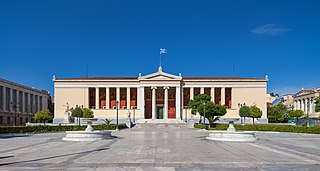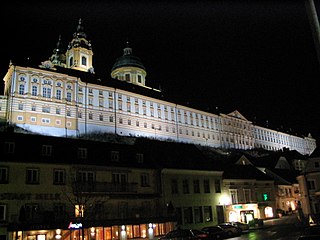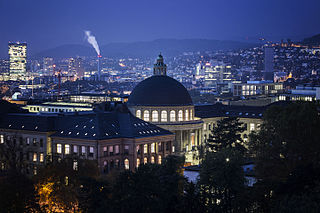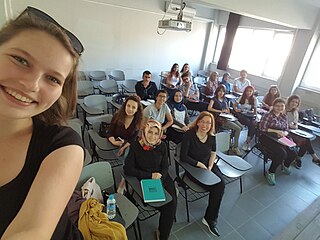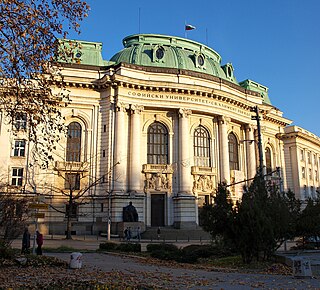| Ministry of Human Resources | |
|---|---|
| Minister State Secretary for Education | Miklós Kásler Zoltán Maruzsa |
| General details | |
| Primary languages | Hungarian |
| System type | Central |
| Literacy (2003) | |
| Total | 99.4 |
| Male | 99.5 |
| Female | 99.3 |
| Enrollment | |
| Total | 1,877,500 |
| Primary | 886,500 |
| Secondary | 570,000 |
| Post secondary | 421,000 |
| Attainment | |
| Secondary diploma | 86 |
| Post-secondary diploma | 14 |


The educational system in Hungary is predominantly public, run by the Ministry of Human Resources. Preschool kindergarten education is compulsory and provided for all children between three and six years old, after which school attendance is also compulsory until age of sixteen. [1] Primary education usually lasts for eight years. Secondary education includes three traditional types of schools focused on different academic levels: the Gymnasium enrols the most gifted children and prepares students for university studies; the secondary vocational schools for intermediate students lasts four years and the technical school prepares pupils for vocational education and the world of work. The system is partly flexible and bridges exist, graduates from a vocational school can achieve a two years program to have access to vocational higher education for instance. [2] The Trends in International Mathematics and Science Study (TIMSS) rated 13–14-year-old pupils in Hungary among the best in the world for maths and science.
Contents
- The social environment of education
- School system in Hungary
- Hungarian education and training programmes (ISCED-97)
- Organization of the educational system
- Pre-primary education
- Primary education
- Secondary education
- Higher education
- Vocational schools
- Foreign students in Hungary
- Preparatory courses
- See also
- References
- Further reading
- Sources
- External links
Most Hungarian universities are public institutions, and students traditionally study without fee payment. The general requirement for university is the Matura. The Hungarian public higher education system includes universities and other higher education institutes, that provide both education curricula and related degrees up to doctoral degree and also contribute to research activities. Health insurance for students is free until the end of their studies. English and German language is important in Hungarian higher education, there are a number of degree programs that are taught in these languages, which attracts thousands of exchange students every year. Hungary's higher education and training has been ranked 44 out of 148 countries in the Global competitiveness Report 2014. [3]
Today there are 67 higher education institutions in Hungary, ranging from small colleges to top research universities. These universities and colleges are maintained either by the state, private organizations or a church. In accordance with the objectives of the Bologna process the degree structure of tertiary education is based on three cycles. Nearly all study fields lead first to a Bachelor’s degree (usually 3 years), and after a further study period to a Master’s degree (2 years). However, there are some exceptions: medicine, pharmacy, dental and veterinary studies, architecture, law, teacher training, and certain arts-, crafts- and design-related study programmes, which retain a long single-cycle structure of 5 or 6 years of study. The first-cycle programmes last 6–8 semesters (3–4 years, 180–240 credit points) and lead to a bachelor's degree (in Hungarian: alapfokozat). The second cycle, leading to a master's degree (in Hungarian: mesterfokozat), lasts 2–4 semesters (1–2 years, 60–120 credit points). Two-year-long vocational higher education programmes (in Hungarian: felsőoktatási szakképzés) are also available on an optional basis prior to first-cycle programmes and lead to advanced vocational qualifications. The 120 credit points gained in vocational higher education programmes are compatible for recognition in the first (Bachelor) cycle. Any Bachelor’s or master's degree can be followed by specialised higher education courses (in Hungarian: szakirányú továbbképzés). These do not lead to another degree but offer the option of specialisation in a particular field of study. Courses can be studied full-time, part-time or through distance learning. A four-year doctoral programme is a post-graduate course to follow any Master’s or equivalent qualification.
Hungary has a long tradition of higher education reflecting the existence of established knowledge economy. The established universities in Hungary include some of the oldest in the world, the first was the University of Pécs founded in 1367 which is still functioning, although in the year 1276, the university of Veszprém was destroyed by the troops of Peter Csák, but it was never rebuilt. Sigismund established Óbuda University in 1395. Another, Universitas Istropolitana, was established 1465 in Pozsony by Mattias Corvinus. Nagyszombat University was founded in 1635 and moved to Buda in 1777 and it is called Eötvös Loránd University today. The world's first institute of technology was founded in Selmecbánya, Kingdom of Hungary in 1735, its legal successor is the University of Miskolc. The Budapest University of Technology and Economics is considered the oldest institute of technology in the world with university rank and structure, its legal predecessor the Institutum Geometrico-Hydrotechnicum was founded in 1782 by Emperor Joseph II.






